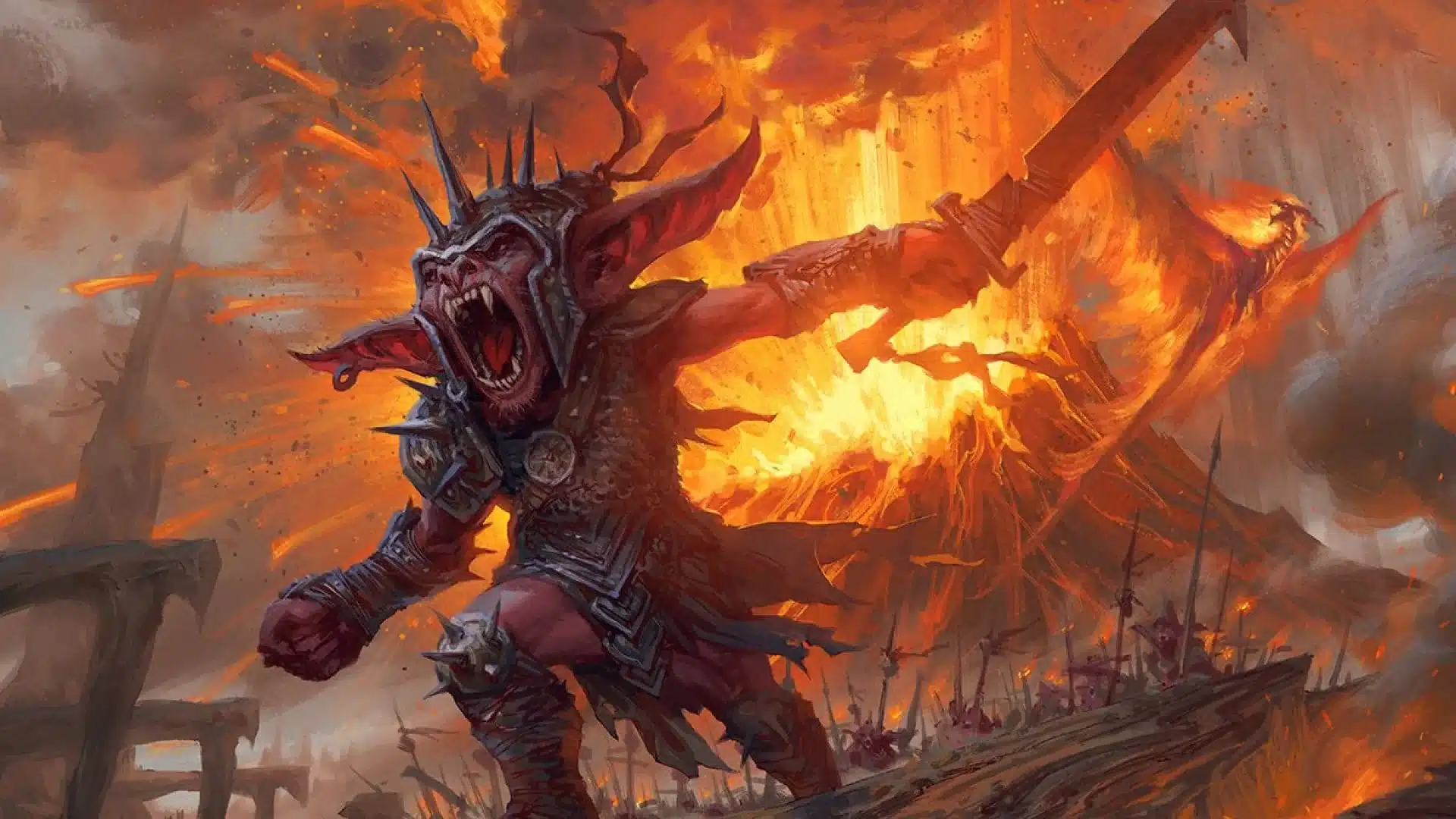First introduced back in Commander 2016, Partner has been one of the most successful Magic: The Gathering mechanics in the format ever since. The option to run multiple legends in the command zone allows for a ton of deckbuilding flexibility. In fact, the mechanic was so successful that Wizards has shifted their philosophy when it comes to designing cards with it. In honor of that fact, and the fact that we’re getting a batch of new Partner cards in the upcoming PlayStation Secret Lair drops, we decided to break down the best that this spicy MTG mechanic has to offer.
Naturally, our rankings here only apply to Commander. Partner doesn’t do an awful lot outside of that format, after all. While we’ve also looked at the full range of Partner cards, including Partner With options, the original mechanic is by far the most powerful. With all of that out of the way, let’s get into the list!
5 | Tevesh Szat, Doom Of Fools
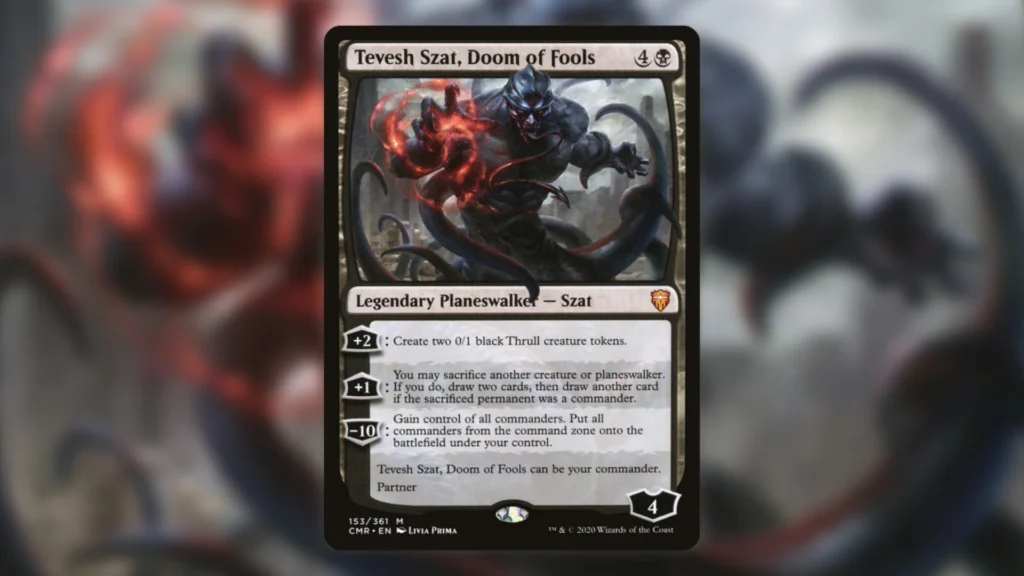
It’s rare to find a planeswalker you can run in the command zone, never mind one you can run with a friend. Tevesh Szat is exactly that, however, offering Aristocrats players an excellent all-in-one package.
With its two plus abilities, this card does pretty much everything Aristocrats wants to do. It creates fodder tokens for you to sacrifice, and it gives you an outlet you can use to sacrifice your creatures for value. Honestly, the plus one alone would probably be enough to make this fantastic, since card draw is so in-demand in Commander. Getting a better Village Rites every turn is no joke.
Tevesh Szat’s ultimate is mostly flavor text, but in the right build, it’s totally achievable. The Thrulls it creates are pretty great protection, after all, and Aristocrats decks typically run other fodder creatures that can serve the same purpose. If you pull it off, the value and disruption generated should be enough to get you to a win before long.
Paired with another token generator like Tana, the Bloodsower, Tevesh Szat is a value engine and a win condition in one. It’s easily one of the best Partner cards that MTG has to offer.
4 | Sakashima Of A Thousand Faces
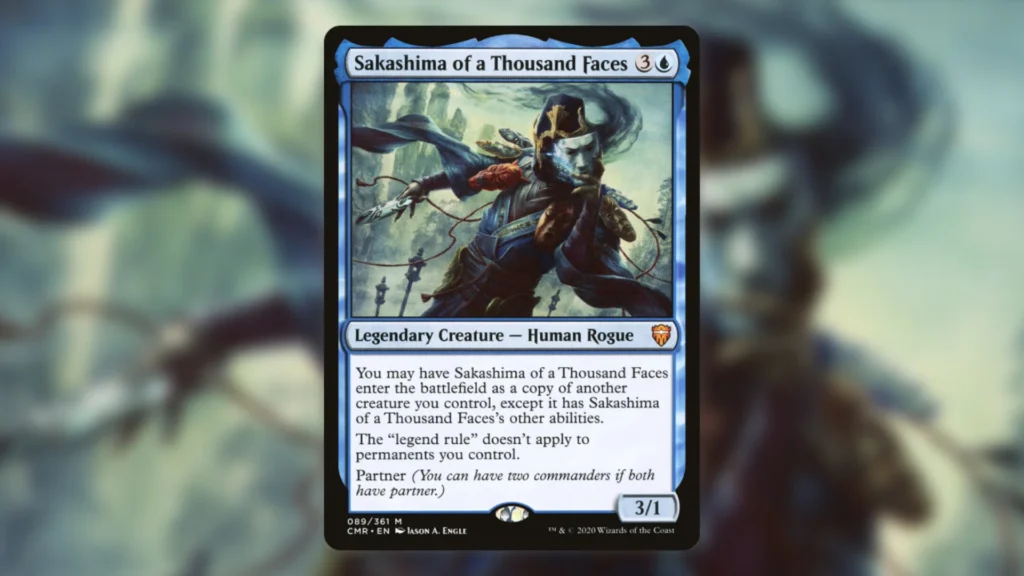
For the most part, Partners are pretty low-key in terms of abilities. Since you can run two of them, this helps to avoid them totally outmatching regular Commanders. In the case of Sakashima of a Thousand Faces, however, you’d happily run it by itself in a lot of scenarios.
Having a Clone in the command zone, even one that only hits your own creatures, is hugely valuable. It’s the kind of effect that gets way better when you have it on demand, since it can easily adapt to a range of different board states. Sakashima offers this ability, and at a competitive rate, too, which gets it off to a great start.
What really pushes the card over the edge is that last ability. Turning off the legend rule is something a lot of decks are willing to dedicate full card slots to, whether it’s Mirror Box or Mirror Gallery. Getting it almost incidentally on an already great card is amazing. This allows Sakashima to copy your other Commander, as well as any other legend you happen to be running. It also opens the door for you to make more copies as long as Sakashima sticks around, which can go hard with a lot of different cards. Sakashima is currently the most expensive Partner in the game, and with good reason.
3 | Tymna, The Weaver
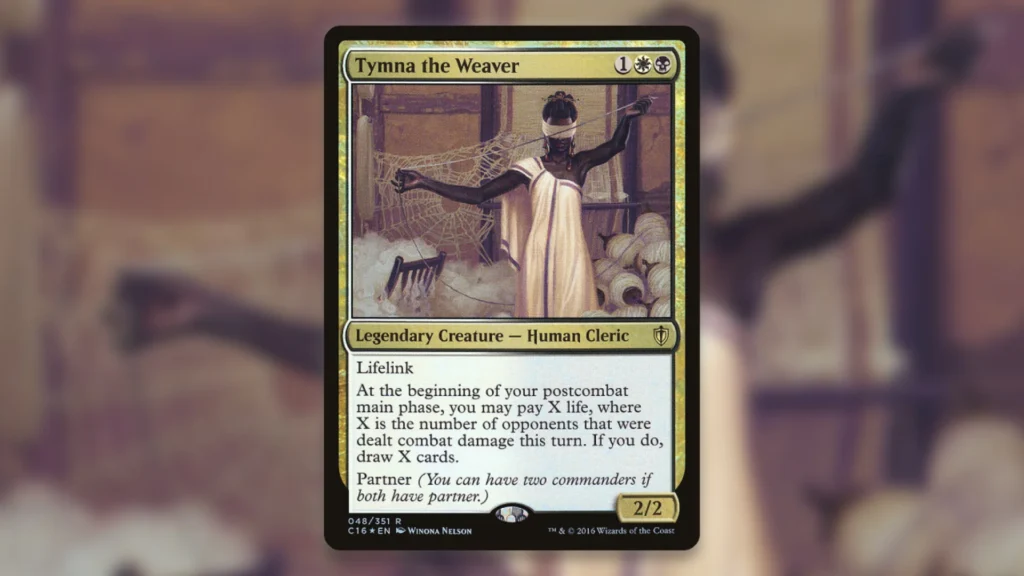
As anyone who plays cEDH regularly knows, the Partner mechanic has had a massive impact on that format. Most of the top-tier Commanders there are Partner combos, and many of those make use of Tymna as one of their picks.
Tymna doesn’t look particularly powerful to the untrained eye, but it has a couple of key elements that really make it worth playing. For starters, being in two colors immediately opens up your deckbuilding options. This is very relevant in cEDH, where the mana is basically perfect and you want to be playing the best staples in every color you can. In casual, this is still a big upside, since four-color Commanders are few and far between.
The other big advantage of Tymna is its card draw potential. Ramp and card draw are two of the most important effects in Commander, so having access to either one in the command zone is a big deal. While there are better legendary draw engines out there, Tymna can still draw you three cards per turn cycle in a creature-heavy deck. It also comes down relatively early on turn three, which lets you get things going quickly. Whether you’re playing casual or cEDH, Tymna is a certified banger.
2 | Rograkh, Son Of Rohgahh
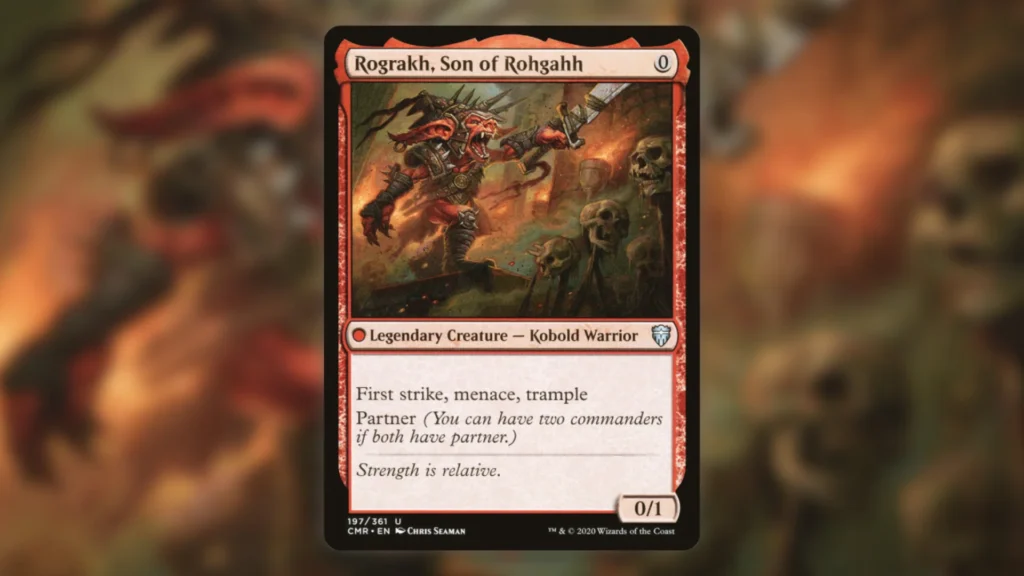
Rograkh is an absolutely fascinating piece of Magic: The Gathering design. It forces the player to consider what they would do with a free, but mostly useless, creature in the command zone. Thankfully, despite initial appearances, Rograkh can do quite a lot.
By virtue of coming down whenever you need, Rograkh makes a lot of the best cards in Commander even better. You can guarantee a legendary creature on board for Mox Amber, and a creature to sacrifice for Diabolic Intent, to give just a couple of examples. Sacrifice effects in general are absolutely fantastic with Rograkh. The math on cards like Flare of Duplication and Eldritch Evolution totally changes when you have access to something like this at all times.
Thanks to all of these, and countless other tiny interactions, Rograkh is a bit of a staple in cEDH. It also has plenty of fans in casual, however, where players actually try to make his triple-keyword body work. Pairing Rograkh up with Ardenn, Intrepid Archaeologist is a nice way to build a Voltron deck, for example. These strategies are less effective than simply using Rograkh as a free body for sacrifice effects, but they’re certainly more flavorful. No matter how you choose to run it, Rograkh is undeniably one of the best Partner cards in MTG.
1 | Thrasios, Triton Hero
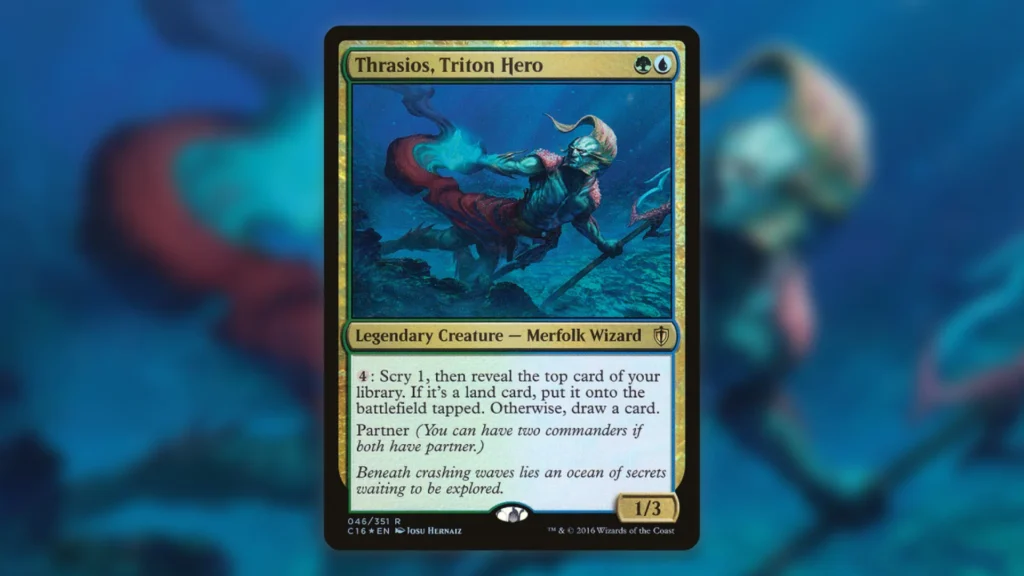
Taking the top spot here is a card that will be of little surprise to most players out there. Thrasios takes the best parts of Tymna, our number three, and dials all of them up to 11.
While Thrasios’s ability is a bit pricey at four mana, it offers both ramp and card draw in one neat package. As we discussed earlier, these are both things every Commander deck wants to be doing. Having access to both in just one half of your Commander is ridiculous. This ability doesn’t require a tap, either, which means it can serve as an easy infinite mana outlet for many decks. If you can’t win after drawing your deck and putting all your lands into play, then your deck has some serious problems.
Thrasios is also another two-color Partner, and crucially, one that gives access to blue. In cEDH, this is the most important color, since it gives you access to the free counterspells necessary to survive, and the best draw engines in the format in Rhystic Study and Mystic Remora. Green lets you play all of the best mana ramp, too. This offers more utility than Tymna, and on a cheaper body to boot.
Throw in reasonable stats and two relevant creature types, and you have an easy pick for the best of the Partner cards in MTG. Thrasios would likely be a popular Commander even without Partner attached. With it, it’s one of the best the game has ever seen.
